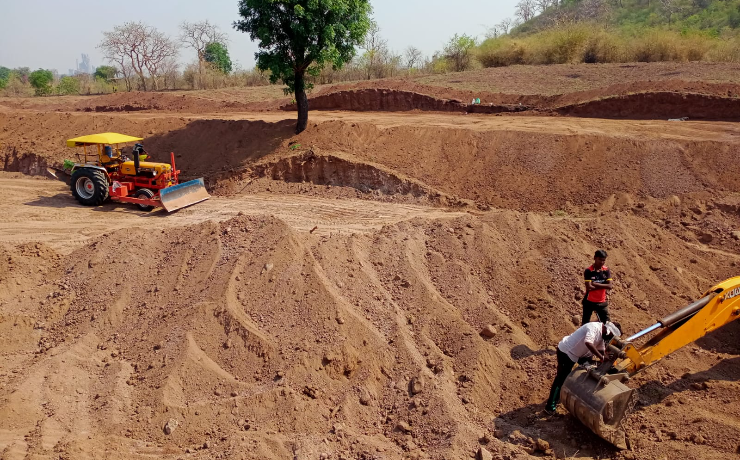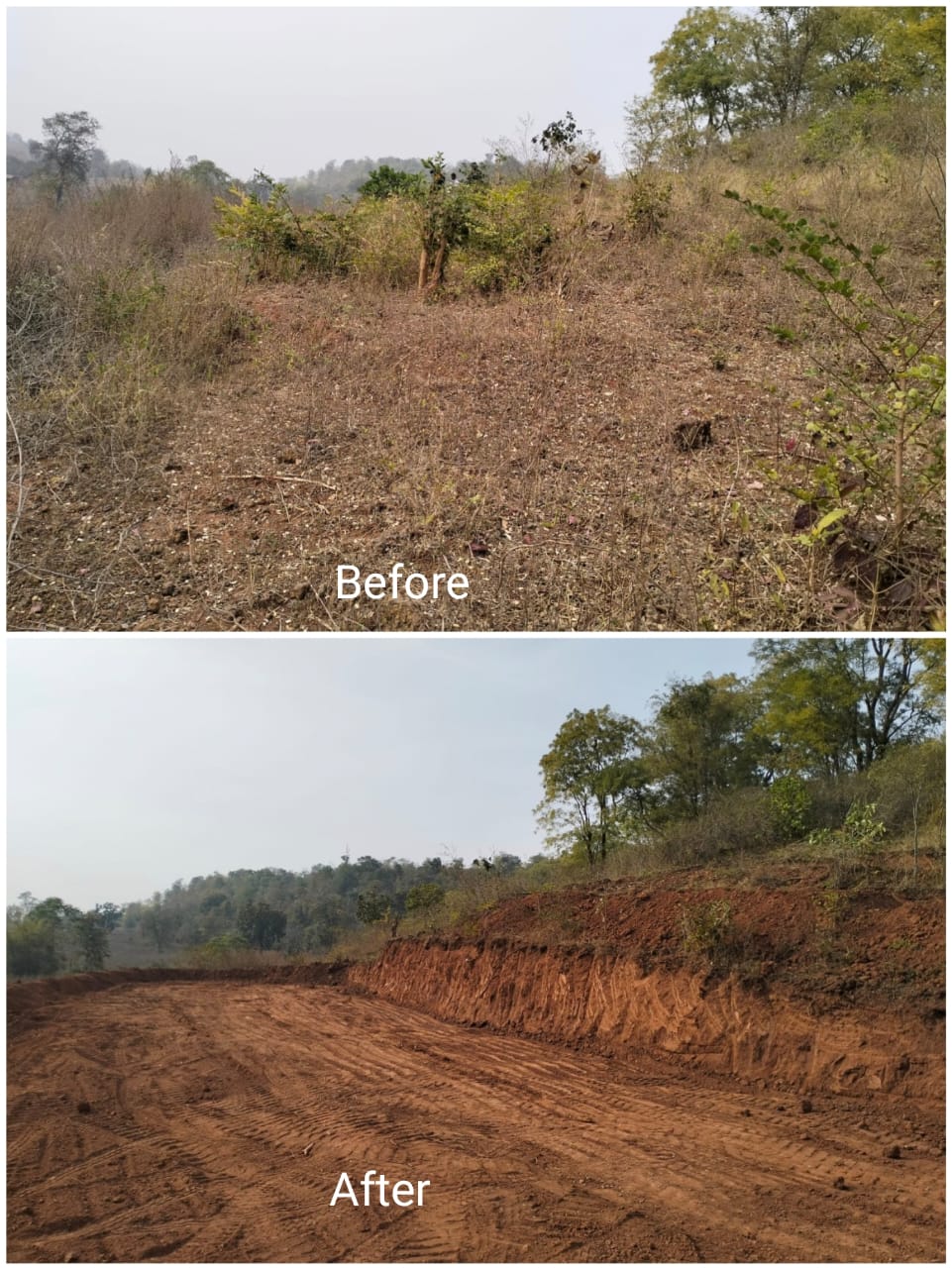When you think of ‘terrace farming’ in India, you tend to envision picturesque landscapes characterized by lush green steps carved into hilly terrains – the tea gardens of Assam, rice terraces of Sikkim or vegetable terraces in the Nilgiri Hills of Tamil Nadu come to mind.
But terrace farming has emerged as an innovative practice in ‘dry, rugged hilly terrain’ states like Maharashtra - helping marginal farmers revitalise once fallow land, fight soil erosion, mitigate climate change and double their incomes. And a driving force behind it, has been Ambuja Foundation – working with 197 farmers to convert almost 80 ha of land to terrace farming.
Doubling Income in Jiwati Taluka, Nagpur
Nestled in the hilly terrain of Jiwati Taluka, Nagapur, the region's predominantly tribal population has faced long-standing challenges in agricultural productivity due to its rugged landscape. However, since 2017, farmer Ananadrao Kodape has become a beacon of hope, actively collaborating with Better Cotton and Ambuja Foundation to revitalise agriculture in the area.
With three acres of land primarily growing cotton and soybean, Mr. Kodape encountered significant obstacles on his half-acre of uneven ground – where uneven land caused difficulties in cultivation, led to soil erosion, and resulted in the early loss of soil moisture. In 2020-2021, Ambuja Foundation introduced a ground-breaking initiative promoting terrace farming and farm ponds in the rugged dry area, which Mr. Kodape championed within his community.
Before the intervention, Mr. Kodape's hilly half-acre yielded only 65 crates of tomatoes, earning him ₹16,250. However, post-implementation, he diversified his crops, significantly boosting his income – earning Rs. 34,880 from cauliflower, amaranth, tomato, okra and beans. The transition to terrace farming not only doubled his income but also reduced soil erosion and improved moisture retention.
Mr. Kodape's success has garnered government support, enabling him to construct a ₹7.51 lakh shade net house with a 90% subsidy. This investment is poised to further elevate his agricultural practices and productivity.
The Emergence of Terrace Farming in Dry, Hilly States
Terrace farming, a method that involves creating flat areas on sloped land to cultivate crops, has emerged as a vital practice in many dry, yet hilly, states of India, including Nagpur and Chandrapur in Maharashtra. This technique not only addresses the challenges posed by the region’s arid climate but also plays a significant role in soil conservation, water management, and improving agricultural productivity.
Chandrapur, located in the eastern part of Maharashtra, has a history of agriculture that has been challenged by irregular rainfall, poor soil quality, and increasing temperatures. Traditionally, farmers relied on rain-fed agriculture, which often led to crop failures during droughts. The need for a more sustainable farming method became apparent as these challenges intensified, especially in the face of climate change.
The implementation of terrace farming in Chandrapur by Ambuja Foundation has had several advantages:
- Soil Conservation: By breaking the slope into smaller, level areas, terrace farming has reduced soil erosion caused by rainwater runoff. This is particularly crucial in Chandrapur, where heavy rains can wash away the topsoil, leading to reduced fertility.
- Water Management: Terracing has helped in capturing and retaining water. The flat surfaces allow rainwater to seep into the ground, replenishing groundwater levels and reducing the need for irrigation. In a dry state like Maharashtra, efficient water use of this kind is vital for sustainable agriculture.
- Increased Crop Yield: Farmers practicing terrace farming have reported higher yields compared to traditional methods. The level plots ensure better cultivation of a variety of crops, which has led to increased profitability for farmers and viability of small, marginal farms in the area.
- Biodiversity Promotion: Terrace farming has supported diversified cropping patterns, including the cultivation of pulses, cereals, and vegetables. This diversification not only benefits farmers economically but also reduces risk.
Challenges to Adoption
Despite its advantages, the adoption of terrace farming has not been without challenges. Initial investment costs for building terraces can be significant, and farmers require training to effectively implement the technique. Moreover, there are sometimes challenges in the willingness of farmers to adopt new practices. However, through workshops and training programs, farmers are educated about the long-term benefits and techniques of constructing and maintaining terraces.
Conclusion
Chandrapur is not alone in its embrace of terrace farming. Other dry regions in India, such as Rajasthan and parts of Gujarat, have also adopted this method to combat similar agricultural challenges. In these areas, terrace farming has led to the rejuvenation of degraded lands and provided a sustainable solution for smallholder farmers facing water scarcity.
The emergence of terrace farming in Maharashtra, exemplifies a crucial adaptation strategy for agriculture in dry states. By enhancing soil and water conservation, increasing agricultural productivity, and promoting biodiversity, terrace farming holds promise for sustainable agricultural practices in the face of climate change.
As more farmers recognize its benefits, this ancient technique may well redefine the agricultural landscape of dry regions in India, ensuring improved livelihoods for agricultural households. Continued support from government initiatives and local organizations will be essential in making terrace farming a widespread practice, fostering resilience in the agricultural sector.








